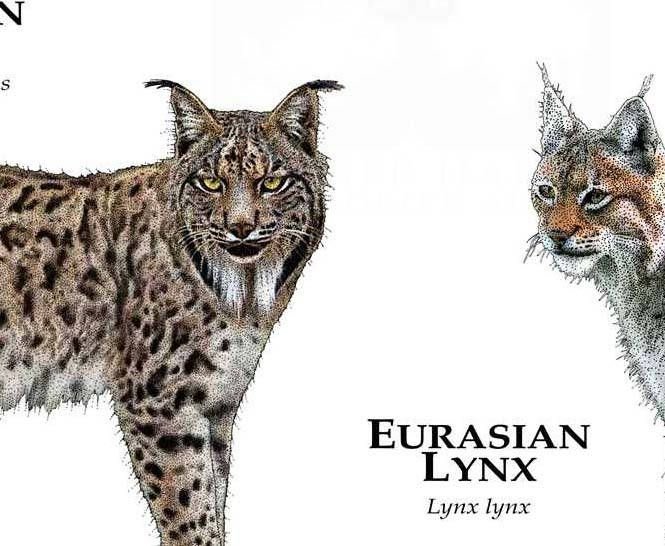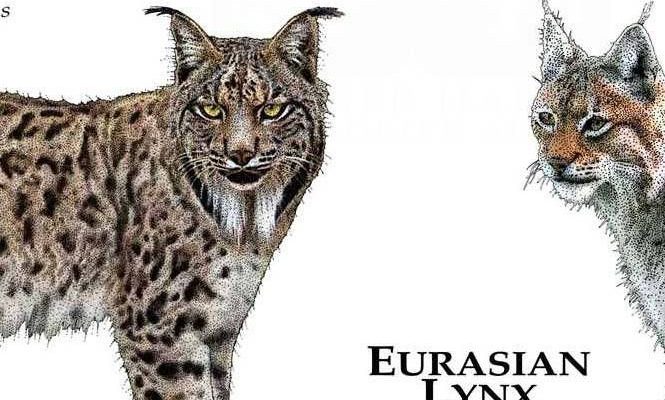
Imagine the lynx as a puzzle piece that connects various threads of our planet’s evolutionary web. Just as a puzzle can’t be completed without each piece fitting perfectly, the lynx plays a vital role in its ecosystem while also reflecting the environmental changes that have shaped its existence. So, grab a cup of coffee, and let’s dive into the captivating evolutionary journey of the lynx, exploring how it became the unique creature we know today.
What Makes a Lynx Unique?
To understand the evolutionary history of the lynx, it’s essential first to recognize what sets them apart from other wild cats. Lynxes are medium-sized felines known for their short tails, long legs, and distinctive tufts of hair on their ears. These features aren’t just for show; they’re vital adaptations. The tufts help enhance their hearing, which is crucial for hunting in thick, wooded environments. Lynxes primarily prey on small mammals, like hares, using their keen senses to detect movement in the shadows.
There are four main species of lynx: the Canadian lynx, Eurasian lynx, Iberian lynx, and bobcat. Each of these species has adapted to its environment in unique ways. For instance, the Canadian lynx thrives in cold, snowy regions, sporting large, furry paws that act like snowshoes, allowing it to navigate effortlessly through deep snow. On the other hand, the Iberian lynx is one of the most endangered cats in the world, reflecting a different set of environmental challenges in its native habitat in Spain and Portugal.
In essence, lynxes are a fascinating mix of adaptability and survival instincts. Their unique traits highlight how species can evolve over time to meet the demands of their environments. But what does this evolution look like from a historical perspective?
The Origins of Lynxes
Like many modern animals, lynxes have their roots in ancient felidae ancestors. The lynx we know today can be traced back to the Pleistocene epoch, which lasted from about 2.6 million to 11,700 years ago. During this time, large mammals roamed the Earth, and the climate varied dramatically, leading to various changes in habitats. The ancestors of lynxes adapted to these shifting landscapes, developing traits that would help them thrive in diverse environments.
Fossil records show that early lynx-like creatures, known as *Pseudelephantis*, roamed North America and Eurasia during the late Miocene to early Pleistocene. These ancient felids were larger than modern lynxes and had some features resembling today’s species, but not quite the agile builds we see now. Over time, these early felids evolved, adapting to different climates and prey availability, eventually leading to the emergence of the four lynx species we recognize today.
The Eurasian lynx, for example, is believed to have evolved from these Pleistocene ancestors around 1 million years ago. Its range spans across Europe and parts of Asia, showcasing how environmental changes can influence the distribution of a species. As ice ages came and went, lynxes adjusted their habitats and hunting strategies, allowing them to survive in varying climates.
Adaptations to Changing Environments
Adaptation is a core theme in the evolution of the lynx, and one of the most captivating examples is their thick fur and seasonal coloration. In colder climates, such as those inhabited by the Canadian lynx, their thick coat provides insulation, while their fur may become lighter in winter for better camouflage against the snow. This helps them remain hidden from both prey and predators, an essential survival tactic.
Another interesting adaptation is their diet. Lynxes have a unique hunting style that is finely tuned to their environments. For example, the Iberian lynx primarily hunts the European rabbit, whose population dynamics significantly impact the lynx’s survival. When rabbit populations decline due to disease or habitat loss, the Iberian lynx faces critical challenges, reflecting the delicate balance between a species and its environment.
And let’s not forget their social behavior! Lynxes are generally solitary creatures, which is an adaptation that helps reduce competition for food. Imagine trying to hunt in a crowded forest—it would be tough! This solitary lifestyle allows them to roam large territories, ensuring they have access to enough food.
The Impact of Climate Change
As we look further into the evolutionary history of the lynx, it’s impossible to ignore the impact of climate change. Like many animals, lynxes are facing significant challenges as their environments shift. These changes affect prey availability and habitat conditions, which can threaten their survival.
For example, warmer temperatures might lead to decreased snow cover, impacting the lynx’s ability to hunt effectively. Their thick fur, perfectly designed for snowy landscapes, might not be as beneficial in a warmer climate. This leads to questions about how the lynx will adapt or whether they can adapt quickly enough to survive.
In addition to temperature changes, habitat fragmentation due to urban development poses another challenge. As human populations grow, lynxes find it increasingly difficult to navigate their territories, leading to a decline in genetic diversity. Just like how a puzzle becomes harder to solve if pieces are missing, losing genetic diversity can make it tougher for lynxes to adapt to new challenges.
Conservation Efforts and the Future of Lynxes
Given the various challenges facing lynxes today, conservation efforts are crucial. Organizations and researchers are working hard to protect these species and their habitats. One successful example is the reintroduction of the Eurasian lynx in certain areas of Europe, where it had once disappeared. By carefully managing their habitats and monitoring populations, conservationists hope to stabilize and grow lynx numbers.
Public awareness is also a vital part of conservation. When people understand the importance of lynxes to their ecosystems, they may be more inclined to support conservation efforts. Education about the role of lynxes in controlling prey populations can lead to a greater appreciation of these cats.
Here’s the thing: as we learn more about lynxes and their evolutionary journey, we realize that their fate is tied to the health of our planet. Protecting their habitats and ensuring a balanced ecosystem benefits not just lynxes but many other species as well.
The evolutionary history of the lynx is a rich tapestry woven through time, showcasing resilience, adaptation, and the impact of environmental changes. From their ancient ancestors to the unique species we see today, lynxes tell a story of survival that mirrors the challenges many species face in our rapidly changing world.
As we appreciate these incredible cats, it’s essential to consider our role in ensuring their future. By supporting conservation efforts and advocating for their habitats, we can help keep the story of the lynx alive. So next time you spot one of these elusive cats in the wild or in documentaries, remember that you’re witnessing a part of history—a narrative shaped by nature, adaptation, and our responsibility to protect it.

